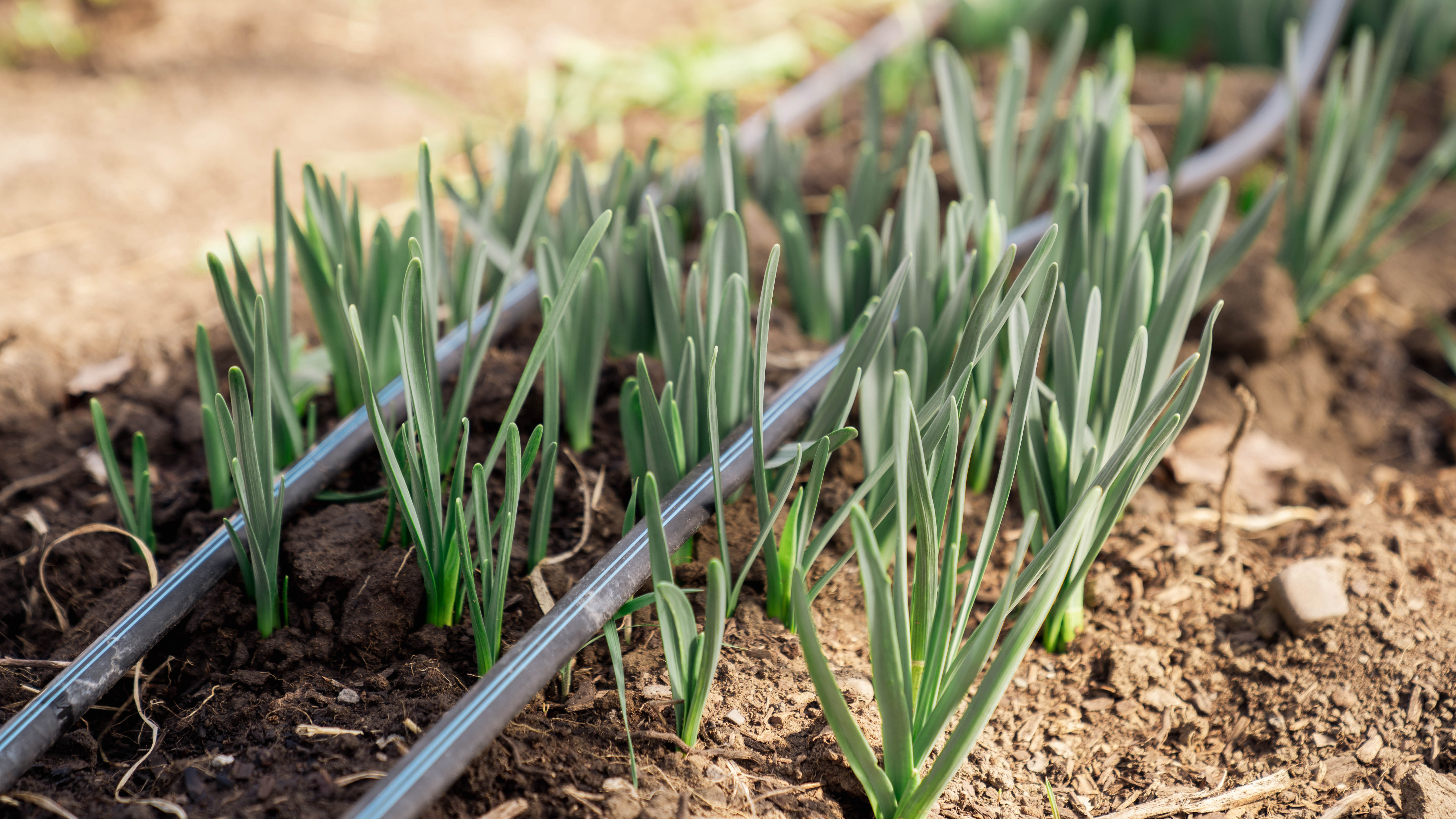
Sustainability
CWU Environmental Literature
Central Washington University’s campus library has a large selection of environmental literature that are available to faculty and students. As a way to increase readership of these sources and to expand both sustainability literacy and understanding of human impacts on the environment, this page was created with book reviews provided by members of the CWU community.
This page is organized by genre, non-fiction, fiction, poetry and children’s books; and alphabetical order by title for your convenience. The book reviews that are attached were provided by CWU community members.
CWU Environmental Literature: Non-Fiction
Braiding sweetgrass: indigenous wisdom, scientific knowledge, and the teachings of plants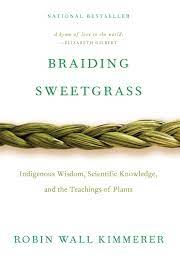
Author: Robin Wall Kimmerer
Description: “Drawing on her life as an indigenous scientist, and as a woman, Kimmerer shows how other living beings offer us gifts and lessons, even if we've forgotten how to hear their voices” (Amazon).
Page Count: 382
Review: "The compelling and artfully written collection of non-fiction essays by Robin Wall Kimmerer titled Braiding Sweetgrass illustrates the complex and varied ways of knowing and the synergies that can arise when we honor this multiplicity of knowing. The strands in this collection stem from Kimmerer’s own experiences as a scientist, as a member of the Citizen Potawatomi Nation, as a mother and as a teacher. She weaves her stories into a brilliant braid, guiding the reader into a deeper understanding of what it is to be human in relationship with this life-giving planet. In one story titled The Consolation of Water Lilies, Kimmerer writes, “We are showered every day with gifts, but they are not meant for us to keep. Their life is in their movement, the inhale and the exhale of our shared breath. Our work and our joy is to pass along the gift and to trust that what we put out into the universe will always come back.” Braiding Sweetgrass is itself a gift, one that will leave you inspired and hungry for more."-Sasha Wohlport
Catching nature in the act: Réaumur and the practice of natural history in the eighteenth century
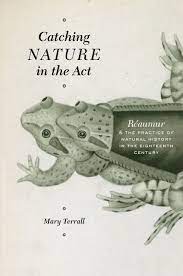
Author: Mary Terrall
Description: Natural history in the eighteenth century was many things to many people—diversion, obsession, medically oreconomically useful knowledge, spectacle, evidence for God’s providence and wisdom, or even the foundation of all-natural knowledge. Ultimately it was a large collaboration and Mary Terrall has revised the picture with various experimental techniques into practice (adapted from Google Books).
Page Count: 382
Climate justice: hope, resilience, and the fight for a sustainable future
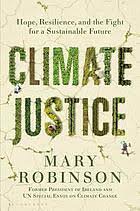
Author: Mary Robinson
Description: A powerful memoir that follows Mary Robinson’s journey with climate justice, addressing many important, current humanitarian issues that could change for the better of our future.
Page Count: 162
Review: Climate Justice by former President of Ireland, Mary Robinson, is a nonfiction novel that follows the author’s fight against climate change and many humanitarian inequalities. This manifesto incorporates a variety of harsh circumstances from all over the world, each with pressing issues relating to human activity and our negative impacts on the climate. Robinson focuses on 10 separate stories involving extreme climate events, ranging from rising sea levels, bitter hurricanes, desertification, and water scarcity; all of which jeopardize the prosperity of destitute communities. Learning about these activists from Africa, Asia, and the Americas, was eye-opening as their fight to be heard is not only very informative but inspiring as progress for change is underway. 8 out of 10 stories were shared by women, which is very empowering as a woman in science, to see ordinary women become leaders in order to protect their communities.
A quote that stuck with me throughout the duration of the book is, “ ‘All human beings are born free and equal in dignity and rights.” Yet, when it comes to the effects of climate change, there has been nothing but chronic injustice and the corrosion of human rights” (Robinson). As humans, we must acknowledge that we are the problem and if everyone positively shifted their lifestyle, the whole climate system could start healing in places that need it the most. -CWU Student Jordyn Braithwaite
Darwin's backyard: how small experiments led to a big theory
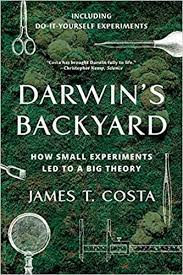
Author: James T. Costa
Description: “Follow the Darwins’s journey to gather evidence and prove his theory of evolution. Costa discusses Darwin’s garden and greenhouse, the neighboring meadows, and wood cellar as well as any other areas that could have been turned into an at-home lab. Besides’s work, readers gather a glimpse of Darwins' personal life” (Amazon).
Page Count: 441
David Douglas: a naturalist at work: an illustrated exploration across two centuries in the Pacific
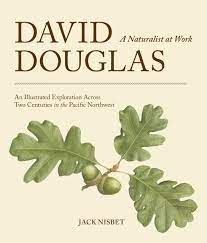
Author: Jack Nisbet
Description: “David Douglas, a Naturalist at Work is a colorfully illustrated collection of essays that examines various aspects of Douglas's career, demonstrating the connections between his work in the Pacific Northwest of the 19th century and the place we know today” (Amazon).
Page Count: 191
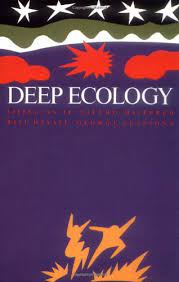
Author: Bill Devall
Description: “Learn how to develop harmony between individuals, communities, and nature. The term “deep ecology,” paves the path to a simple and fulfilling life that will help solve important environmental issues in a positive way” (Amazon).
Page Count: 266
Deep-sea biodiversity: pattern and scale
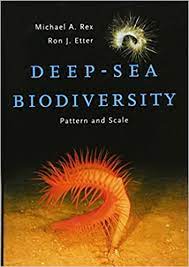
Author: Michael Rex and Ron Etter
Description: “Frigid, dark, and energy-deprived, the deep sea was long considered hostile to life. However, new sampling technologies and intense international research efforts in recent decades have revealed a remarkably rich fauna and an astonishing variety of novel habitats. These recent discoveries have changed the way we look at global biodiversity” (Amazon).
Page Count: 354
Defending mother earth: Native American perspectives on environmental
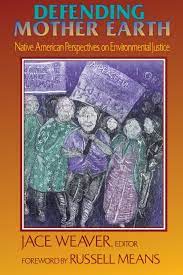
Author: Jace Weaver
Description: A collection of essays from Native American perspective on the urgent issues of environmental devastation and how it affects indigenous people.
Page Count: 205
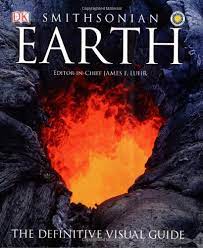
Author: James F. Luhr
Description: “Thousands of captioned photographs, illustrations, and diagrams complement a stunning overview of the earth and the diverse forces and processes that shape and continue to influence the planet” (Amazon).
Page Count: 503
Ecology and recovery of eastern old-growth forests
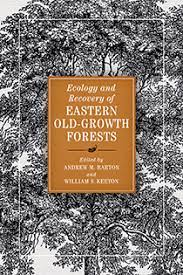
Author: Andrew M. Barton and William S. Keeton
Description: “Forest ecologists William Keeton and Andrew Barton bring together a volume that breaks new ground in our understanding of ecological systems and their importance for forest resilience in an age of rapid environmental change. This edited volume covers a broad geographic canvas, from eastern Canada and the Upper Great Lakes states to the deep South. It looks at a wide diversity of ecosystems, including spruce-fir, northern deciduous, southern Appalachian deciduous, southern swamp hardwoods, and longleaf pine” (Amazon).
Page Count: 340
Ecotherapy: healing with nature in mind
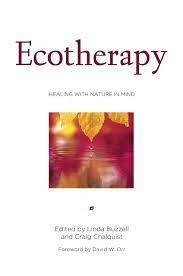
Author: Linda Buzzell
Description: “Ecotherapy revolves around nature-based methods that promote psychological healing through healthy interactions with the Earth. This book is a collection of essays that reaches the topics of spiritual development, eco-therapy, and restorations of communities” (Amazon).
Page Count: 311
Enviromedics: the impact of climate change on human health
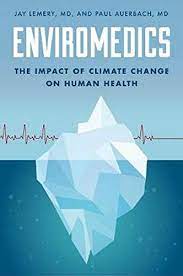
Author: Jay Lemery and Paul Auerbach
Description: “Jay Lemery and Paul Auerbach clarify the science, dispel the myths, and help readers understand the threats of climate change to human health. No better argument exists for persuading people to care about climate change than a close look at its impacts on our physical and emotional well-being. The need has never been greater for a grounded, informative, and accessible discussion about this topic. In this groundbreaking book, the authors not only sound the alarm but address the health issues likely to arise in the coming years” (Amazon).
Page Count: 214
Review:
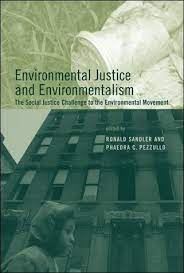
Author: Ronald Sandler
Description: “Case studies from many different perspectives that collaborated on an analysis involving how the environmental justice and mainstream environmental organizations are connected. It also dives into the deeper subject of both racism and classism in relation to the environmental movement” (Amazon).
Page Count: 352
First along the river: a brief history of the U.S. environmental movement
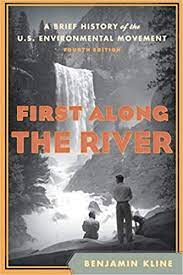
Author: Benjamin Kline
Description: “A historical perspective of major political, religious, philosophical, and social events in the U.S that had influenced the environmental movement during the pre-colonial era to present” (Amazon).
Page Count: 227
Framing the world: explorations in ecocriticism and film
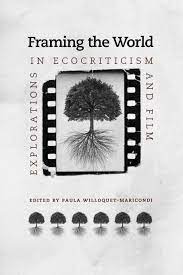
Author: Paula Willoquet-Maricondi
Description: “The collection of Essays encourages the incorporation of green film and the ecocriticism that is rooted in literary studies. Readers are encouraged to become more ecologically minded and sensitive to ecological films that reinforce and challenge the current perceptions of nature, the human & nature relationship, and environmental issues” (Amazon).
Page Count: 258
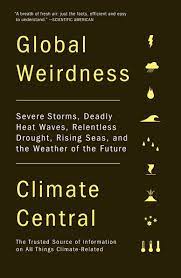
Author: Climate Central
Description: “Global Weirdness summarizes everything we know about the science of climate change, explains what is likely to happen to the climate in the future, and lays out, in practical terms, what we can do to avoid further shifts. In sixty easy-to-read entries, Climate Central tackles basic questions” (Amazon).
Page Count: 214
Green writing: romanticism and ecology
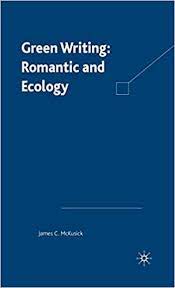
Author: James C. McKusick
Description: “Read from the perspective of English Romantic poets that share arguments of American environmentalism. Many of the core values and main concepts build upon the environmental movement values taught by Emerson, Thoreau, John Muir, and Mary Austin” (Amazon).
Page Count: 261
Half-earth: our planet's fight for life
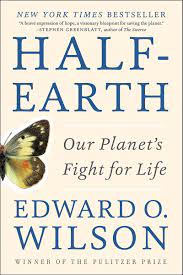
Author: Edward O. Wilson
Description: “Edward O. Wilson states that in order to stave off the mass extinction of species, including our own, we must move swiftly to preserve the biodiversity of our planet. Half-Earth argues that the situation facing us is too large to be solved piecemeal and proposes a solution commensurate with the magnitude of the problem: dedicate fully half the surface of the Earth to nature” (Amazon).
Page Count: 259
Indigenous traditions and ecology: the interbeing of cosmology and community
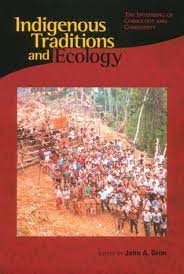
Author: John Grim
Description: “Indigenous and non-native scholars and environmental activists collaborate to answer questions from communities that indigenous groups struggle with involving threats to sovereignty, increased market and media globalization and the conservation of endangered regions” (Amazon).
Page Count: 754
Insect biodiversity: science and society
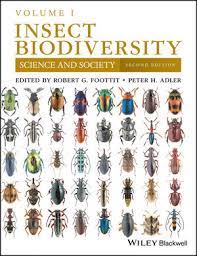
Author: Robert G. Foottit and Peter H. Adler
Description: “Insect Biodiversity: Science and Society bring together leading scientific experts to assess the impact insects have on humankind and the earth’s fragile ecosystems. It examines why insect biodiversity matters and how the rapid evolution of insect species is affecting us all” (Amazon).
Page Count: 632
Leaves of grass, 1860: the 150th-anniversary facsimile edition
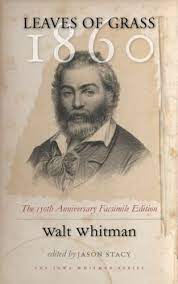
Author: Walt Whitman
Description: “A profoundly rich product of a period when America faced its greatest peril, this third edition finds the poet transforming himself into a prophet of spiritual democracy and the Whitman we celebrate today--boisterous, barbaric, and benevolent. Reprinting it now continues the poet's goal of proclaiming for "the whole of America for each / individual, without exception . . . uncompromising liberty and equality” (Amazon).
Page Count: 489
Life in the hothouse: how a living planet survives climate change

Author: Melanie Lenart
Description: “In this insightful, compelling, and highly readable work, Melanie Lenart, an award-winning journalist and science writer who holds a Ph.D. in Natural Resources and Global Change, examines global warming with the trained eye of a professional scientist. And she presents the science in a clear, straightforward manner” (Amazon).
Page Count: 236
Lights of mankind: the Earth at night as seen from space
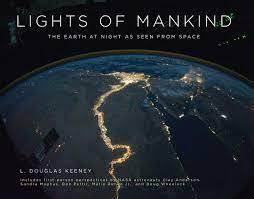
Author: L. Douglas Keeney
Description: “Earth at night, as the photos and essays of this book showcases, is an electric planet, glittering with billions of lights for all the solar system to see” (Amazon).
Page Count: 281
Original instructions: Indigenous teachings for a sustainable future
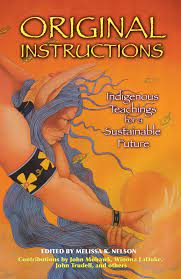
Author: Melissa Nelson
Description: “Indigenous traditional storytelling that remind readers of gratitude, kinship, community, and creation. Read from many indigenous leaders' perspectives that will give you hope about biological relationships and cultural diversity” (Amazon).
Page Count: 359
Our backyard: a quest for environmental justice
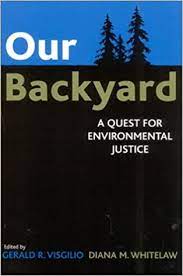
Author: Gerald Visgilio
Description: “A collection of essays from local activists and respected scholars involving history, status, and environmental justice. The essays touch on the topics of social and political issues revolving around minority and poor communities. It discusses the environmental risks as well as the future of environmental justice and sustainability” (Amazon).
Page Count: 223
Pilgrim at Tinker Creek
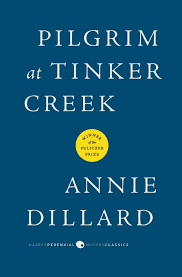
Author: Annie Dillard
Description: “Her personal narrative highlights one year's exploration on foot in the Virginia region through which Tinker Creek runs. In the summer, Dillard stalks muskrats in the creek and contemplates wave mechanics; in the fall, she watches a monarch butterfly migration and dreams of Arctic caribou. She tries to con a coot; she collects pond water and examines it under a microscope. She unties a snakeskin, witnesses a flood, and plays King of the Meadow with a field of grasshoppers. The result is an exhilarating tale of nature and its seasons” (back cover).
Page Count: 271
Silenced rivers: the ecology and politics of large dams
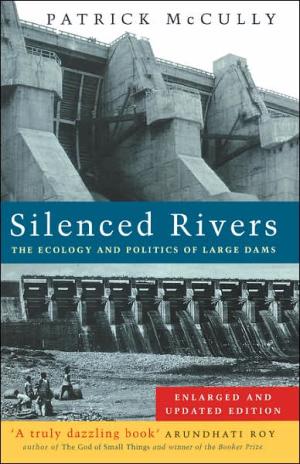
Author: Patrick McCully
Description: The book “explains the history and politics of dam building worldwide and shows why large dams have become so controversial. It details the ecological and human impacts of large dams, and shows how the 'national interest' argument is used to legitimize uneconomic and unjust projects which benefit elites while impoverishing tens of millions, describes the technical, safety, and economic problems of dam technology, the structure of the international dam-building industry, and the role played by international banks and aid agencies” (Amazon).
Page Count: 359
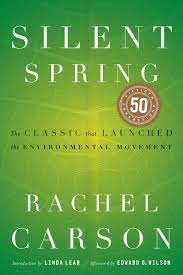
Author: Rachel Carson
Description: “First published by Houghton Mifflin in 1962, Silent Spring alerted a large audience to the environmental and human dangers of indiscriminate use of pesticides, spurring revolutionary changes in the laws affecting our air, land, and water” (Amazon).
Page Count: 368
Review: In Rachel Carson’s book, Silent Spring, it explores the dark side of pesticide use in the U.S. after the wake of the newfound chemical industry, postwar. Carson, an American marine biologist and environmental writer, especially puts a focus on DDT (banned pesticide in the U.S.) and how it affected plants, animals, and human life. Carson leans on into the reader to understand the prominence of harmful additives and how they can impact the future generations of humans and life on earth and gives an in depth look into why we shouldn’t contribute to these harmful actions. A quote that I thought was really profound when talking about chemicals and how detrimental they are is where Carson says “Their presence casts a shadow that is no less ominous because it is formless and obscure, no less frightening because it is simply impossible to predict the effects of lifetime exposure to chemical and physical agents that are not part of the biological experience of man” (page 258-259). As someone who is currently studying environmental science, this book really jumped out at me with its clear explanations of why pesticides degrade our earth, and why people should be worried about them. If you let it, this book will open your eyes and make you think twice about buying chemical-based products. -CWU Student Devina Largent
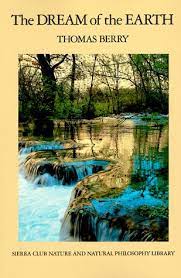
Author: Thomas Berry
Description: “Berry’s thesis proposes criteria that evaluate human history, development, and activity and how it enhances life. He gives many ideas on our history while sharing insight, inspiration, and guidance to move forward from exploitation and transform to a more restorative relationship with the natural world” (Amazon).
Page Count: 247
The environmental justice reader: politics, poetics, & pedagogy
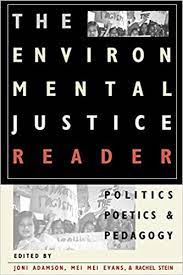
Author: Joni Adamson
Description: “Environmental justice relating to economic, political, and cultural aspects that pay attention to race, gender, and class inequality. A book that links political studies, literary analysis, and teaching strategies from many perspectives” (Amazon).
Page Count: 395
The human footprint: a global environmental history
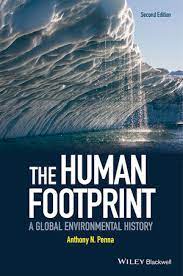
Author: Anthony N. Penna
Description: “The Human Footprint is an innovative and accessible study of transnational environmental history, which uses broad themes to highlight the long and rich history of the earth. Offering a coherent, comparative examination of the world's past, Penna's multidisciplinary approach draws on the most recent research in geology, climatology, archaeology, anthropology, and history; with themes ranging from the global impact of agriculture and urbanization to manufacturing, consumption, and industrialization” (back cover).
Page Count: 364
The idea of wilderness: from prehistory to the age of ecology
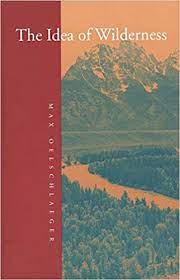
Author: Max Oelschlaeger
Description: “An intellectual history which ties evidence from philosophy, anthropology, theology, literature, ecology, cultural geography and archeology to provide a new scientific understanding of mankind's relationship to the natural world” (Amazon).
Page Count: 447
The midwestern pastoral: place and landscape in literature of the American heartland
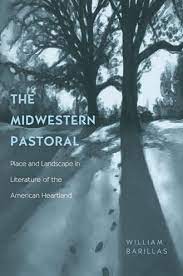
Author: William David Barillas
Description: “The midwestern pastoral is a literary tradition of the place and rural experience that celebrates an attachment to the land that is mystical as well as practical, based on historical and scientific knowledge as well as personal experience. It is exemplified in the poetry, fiction, and essays of writers who express an informed love of the nature and regional landscapes of the Midwest” (Amazon).
Page Count: 258
The nature of nature: why we need the wild
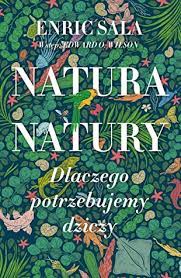
Author: Enric Sala
Description: “A manifesto of why we should invest in the natural world, not just for the beauty of it but to understand from an economic perspective, conservation in all environments is essential to all survival” (Amazon).
Page Count: 255
The new Northwest Passage: a voyage to the front line of climate change
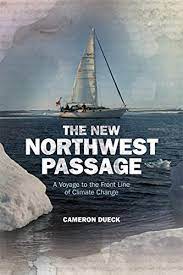
Author: Cameron Dueck
Description: “Follow Cameron Dueck and his crew on a journey that not many people have completed; the melted waters from Victoria to Halifax. They had experienced harsh weather and boat issues which broaden their perspective on climate change and how it is affecting the modern Arctic lifestyle” (back cover).
Page Count: 315
The Norton book of nature writing
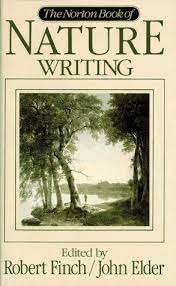
Author: Robert Finch
Description: "The Norton Book of Nature Writing, " including 125 selections by 94 writers, is the first definitive and comprehensive collection of the many voices of nature writing which have flourished in English and American over the last two hundred years” (Google books).
Page Count: 921
The one-straw revolution: an introduction to natural farming
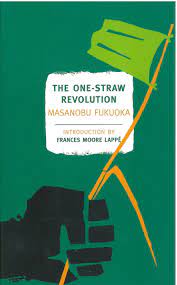
Author: Masanobu Fukuoka
Description: This “manifesto about farming, eating, and the limits of human knowledge presents a radical challenge to the global systems we rely on for our food. At the same time, it is a spiritual memoir of a man whose innovative system of cultivating the earth reflects a deep faith in the wholeness and balance of the natural world” (Amazon).
Page count: 181
The Princeton guide to ecology
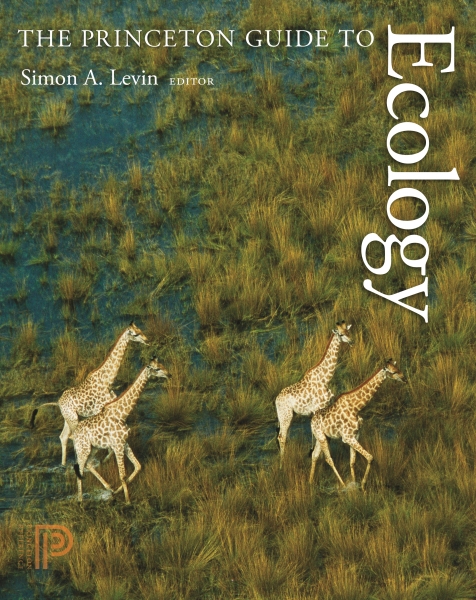
Author: Simon A. Levin, Stephen R. Carpenter
Description: “The Princeton Guide to Ecology is a concise, authoritative one-volume reference to the field's major subjects and key concepts. Edited by eminent ecologist Simon Levin, with contributions from an international team of leading ecologists, the book contains more than ninety clear, accurate, and up-to-date articles on the most important topics within seven major areas: autecology, population ecology, communities and ecosystems, landscapes and the biosphere, conservation biology, ecosystem services, and biosphere management” (Amazon).
Page Count: 809
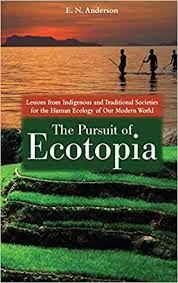
Author: E. N. Anderson
Description: “Anderson argues that the environmental crisis is due to the short-term perception we have on resource management and ethical conduct, instead of a long-term global view “ecotopia,” which is a conception that consumerism is cubed by emotionally grounded policies and ethics of sustainability, social justice, and stewardship” (Amazon).
Page Count: 251
The rebirth of environmentalism: grassroots activism from the spotted owl to the polar bear
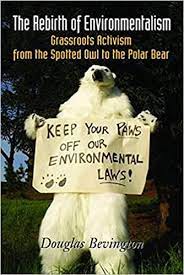
Author: Douglas Bevington
Description: “A very effective grassroots organization has had many successes when it comes to protecting both endangered species and forests all throughout the United States” (Amazon).
Page Count: 285
This green and growing land: environmental activism in American history
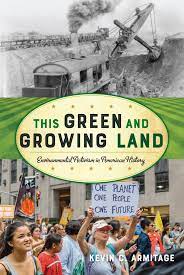
Author: Kevin C. Armitage
Description: “From the 1750s to the climate change movement, this source explains the timeline that American environmental activists have undergone as a way to protect our natural world and to promote a healthy human society. With more than 250 years of activism, it gushes about America's achievements as well as the current environmental problems still around today” (Amazon).
Page Count: 291
Thoreau's sense of place: essays in American environmental writing
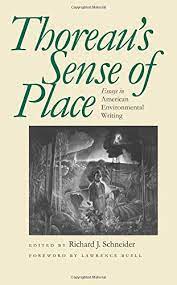
Author: Richard J. Schneider
Description: “The contributors to this stimulating collection of Thoreau’s green concepts, address the ways in which Thoreau and his successors attempt to cope with the basic epistemological split between perceiver and place inherent in writing about nature; related discussions involve the kinds of discourse most effective for writing about place. They focus on the impacts deriving from science, politics, race, gender, history, and literary conventions. Finally, they explore the implications surrounding a writer's appropriation or even exploitation of places and objects” (Amazon).
Page Count: 310
To heal the earth: selected writings of Ian L. McHarg
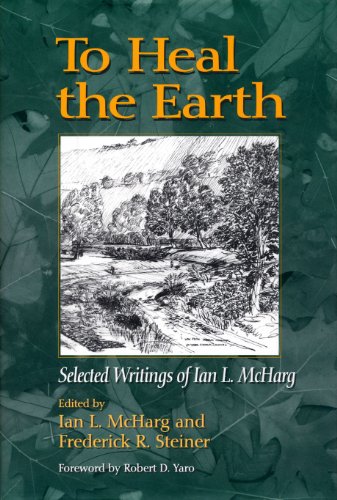
Author: Ian L. McHarg
Description: “Ian L. McHarg's landmark book Design with Nature changed the face of landscape architecture and planning by promoting the idea that the design of human settlements should be based on ecological principles. McHarg was one of the earliest and most influential proponents of the notion that an understanding of the processes that form landscapes should underlie design decisions” (Amazon).
Page count: 380
What we're fighting for now is each other: dispatches from the front lines of climate justice
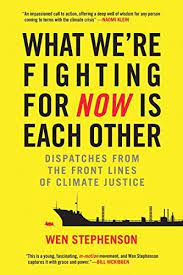
Author: Wen Stephenson
Description: “The science is clear: catastrophic climate change, by any humane definition, is upon us. At the same time, the fossil-fuel industry has doubled down, economically and politically, on business as usual. We face an unprecedented situation—a radical situation. As an individual of conscience, how will you respond?” (Amazon)
Page Count: 239
Unstoppable: harnessing science to change the world
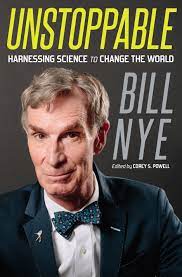
Author: Bill Nye
Description: “With a scientist's thirst for knowledge and an engineer's vision of what can be, Bill Nye sees today's environmental issues not as insurmountable, depressing problems but as chances for our society to rise to the challenge and create a cleaner, healthier, smarter world. We need not accept that transportation consumes half our energy, and that two-thirds of the energy you put into your car is immediately thrown away out the tailpipe. We need not accept that dangerous emissions are the price we must pay for a vibrant economy and a comfortable life” (Amazon).
Page Count: 341
Review:
Environmental Literature: Fiction
Love after the end: an anthology of two-spirit & indigiqueer speculative fiction
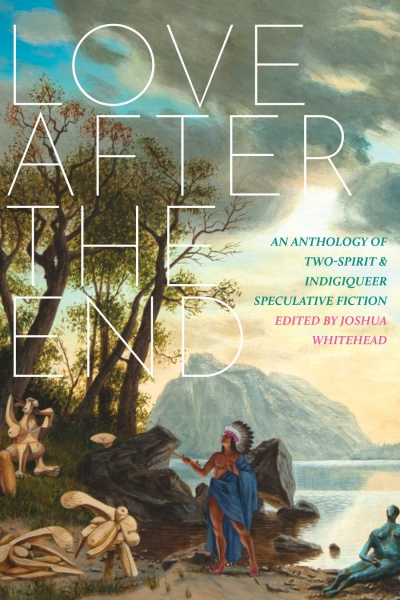
Author: Joshua Whitehead
Description: “This exciting and groundbreaking fiction anthology showcases a number of new and emerging 2SQ (Two-Spirit and queer Indigenous) writers from across Turtle Island. These visionary authors show how queer Indigenous communities can bloom and thrive through utopian narratives that detail the vivacity and strength of 2SQness throughout its plight in the maw of settler colonialism’s history” (Amazon).
Page Count: 194
Environmental Literature: Poetry
Black nature: four centuries of African American nature poetry
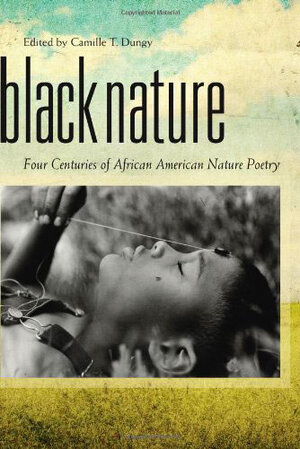
Author: Camille T. Dungy (editor)
Description: “Black poets have a long tradition of incorporating treatments of the natural world into their work, but it is often read as political, historical, or protest poetry―anything but nature poetry. Camille T. Dungy has selected 180 poems from 93 poets that provide unique perspectives on American social and literary history to broaden our concept of nature poetry and African American poetics” (Amazon).
Page Count: 387
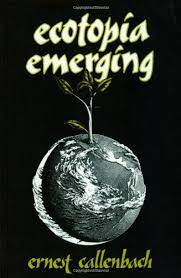
Author: Ernest Callenbach
Description: “A multi-stranded novel that dramatizes the rise and triumph of a powerful American movement to preserve the earth as a safe, sustainable environment. The story springs from harsh realities: Toxic contamination of air, water, and food has become intolerable. Nuclear meltdowns threaten. Military spending burdens the economy. Politicians squabble over outdated agendas while the country declines. But then dedicated people begin to respond in their own ways to the crisis, and a fresh hope arises” (Amazon).
Page Count: 326
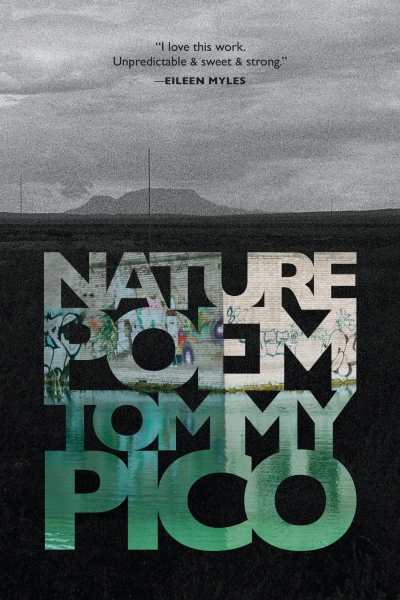
Author: Tommy Pico
Description: “A book-length poem about how an American Indian writer can’t bring himself to write about nature but is forced to reckon with colonial-white stereotypes, manifest destiny, and his own identity as a young, queer, urban-dwelling poet” (Amazon).
Page Count: 74

Author: Gary Snyder
Description: “Probing even further than Snyder's previous collection of poems, The Black Country, this volume freshly explores 'the most archaic values on earth..the fertility of the soil, the magic of animals, the power -vision in solitude, the terrifying initiation and rebirth, the love and ecstasy of the dance, the common work of the tribe” (back cover).
Page Count: 84
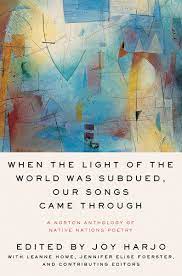
Author: Joy Harjo (editor)
Description: “This landmark anthology celebrates the indigenous peoples of North America, the first poets of this country, whose literary traditions stretch back centuries. Opening with a blessing from Pulitzer Prize–winner N. Scott Momaday, the book contains powerful introductions from contributing editors who represent the five geographically organized sections. Each section begins with a poem from traditional oral literature and closes with emerging poets” (Amazon).
Page Count: 458
Winter hours: prose, prose poems, and poems
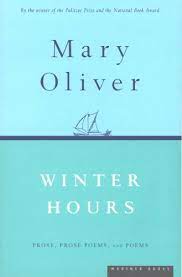
Author: Mary Oliver
Description: A collection containing nine essays and poems to which the audience “gets personal with Oliver by being exposed to her experiences with turtle eggs and house building which she compares to other famous poets to challenge her sense of self” (Amazon).
Page Count: 109
Environmental Literature: Children's Books
Earth!: my first 4.54 billion years
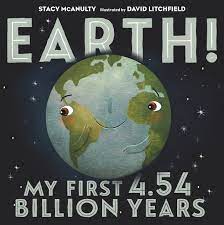
Author: Stacy McAnulty
Reading Age: 4-8 Years
Grade Level: 1-2
Description: “Prepare to learn all about Earth from the point-of-view of Earth herself! In this funny yet informative book, filled to the brim with kid-friendly facts, readers will discover key moments in Earth’s life, from her childhood more than four billion years ago all the way up to the present day. Beloved children's book author Stacy McAnulty helps Earth tell her story, and award-winning illustrator David Litchfield brings the words to life. The book includes back matter with even more interesting tidbits” (Barnes and Noble).
Page Count: 40
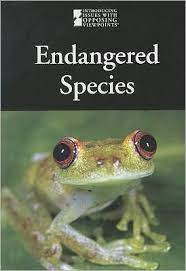
Author: Lauri S. Scherer
Reading Age: 12-17 Years
Grade Level: 5-11
Description: “The Introducing Issues with Opposing Viewpoints series continues that tradition, presenting a wealth of information on contemporary issues in a colorful, easy-to-read format. Includes pro/con articles, full-color photographs, charts, and graphs with engaging facts and easy statistics” (Barnes and Noble).
Page Count: 144
Meadowlands: a wetlands survival story
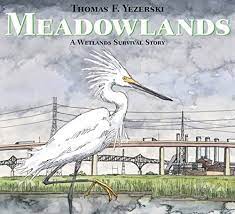
Author: Thomas Yezerski
Reading Age: 5- 8 Years
Grade Level: Kindergarten-3
Description: “The 20,000 acres of wetlands in New Jersey now known as the Meadowlands were once home to hundreds of species of plants and animals. But in the four hundred years since European explorers first arrived in the Meadowlands, people have dammed up, drained, built over, and polluted this formerly vibrant ecosystem―and all but destroyed it. Still, signs of life remain” (Amazon).
Page Count: 40
The cartoon introduction to climate change
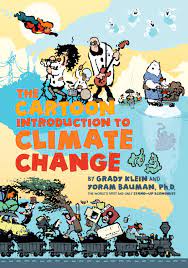
Author: Yoram Bauman, Grady Klevin
Reading Age: +10 Years
Description: “The Cartoon Introduction to Climate Change entertains as it educates, delivering a unique and enjoyable presentation of mind-blowing facts and critical concepts.
"Stand-up economist" Yoram Bauman and award-winning illustrator Grady Klein have created the funniest overview of climate science, predictions, and policy that you’ll ever read. You’ll giggle, but you’ll also learn about everything from Milankovitch cycles to carbon taxes” (Amazon).
Page Count: 205
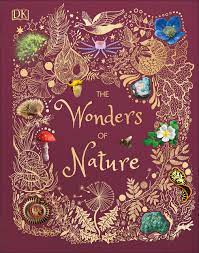
Author: Ben Hoare
Reading Age: 7-9 Years
Grade Level: 2-4
Description: “Explore the curiosities of planet Earth and marvel at the beauty of the natural world in a new way. Throughout the pages of this utterly charming guide to the natural world, you’ll discover the myths and legends of living creatures and minerals. Storybook descriptions and surprising facts about their natural history will capture your child’s attention and keep them coming back for more” (Barnes and Noble).
Page Count: 224
Ocean: a children's encyclopedia
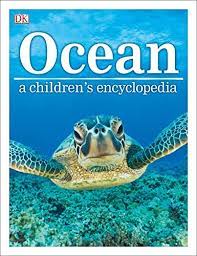
Author: John Woodward
Reading Age: 8-12 Years
Grade Level: 3-7
Description: “Take a dip in all the world’s waters to experience their incredible diversity. Make a splash in the icy Arctic waters before warming up in the tropical Indian Ocean. Experience the super size of mighty whales compared to swarms of tiny krill. Cast your eyes to the skies to see circling sea birds before diving down to meet mysterious creatures of the deep” (Barnes and Noble).
Page Count: 256
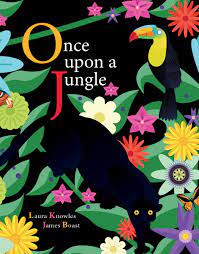
Author: Laura Knowles
Reading Age: 5-8 years
Grade Level: Kindergarten- 3
Description: “Children will learn how the circle of life fuels the jungle ecosystem, supporting life up the food chain only to start again literally at ground level. Young readers will enjoy exploring the illustrations of the many animals hiding between and under the leaves and flowers and in the treetops” (Amazon).
Page Count: 32
Rising seas: flooding, climate change, and our new world
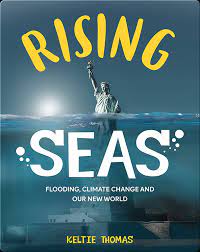
Author: Keltie Thomas
Reading Age: 9-13 Years
Grade Level: 4-8
Description: “Rising Seas: Flooding, Climate Change, and Our New World gives youth an eye-popping view of what the Earth might look like under the rising and falling water levels of climate change. Photographs juxtapose the present-day with that same area's projected future. The shocking images will help them understand the urgency for action. Key issues in today's news will be better understood” (Barnes and Noble).
Page Count: 64
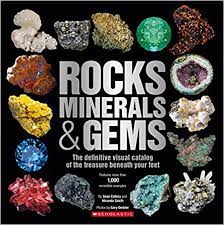
Author: Sean Callery
Reading Age: 8-12 Years
Grade Level: 3-7
Description: “In Rocks, Minerals, and Gems, readers will learn about hundreds of rocks, minerals, crystals, and gems that were forged by the most powerful events in prehistory. Explore what specimens look like and how they're used today—readers can use the information to identify rocks and minerals themselves and open up a spectacular new world” (Barnes and Noble).
Page Count: 224
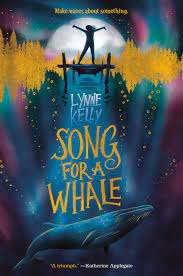
Author: Lynne Kelly
Reading Age: 8-12 Years
Grade Level: 3-7
Description: “From fixing the class computer to repairing old radios, twelve-year-old Iris is a tech genius. But she's the only deaf person in her school, so people often treat her like she's not very smart. If you've ever felt like no one was listening to you, then you know how hard that can be. When she learns about Blue 55, a real whale who is unable to speak to other whales, Iris understands how he must feel. Then she has an idea: she should invent a way to "sing" to him!” (Amazon).
Page Count: 304
Welcome to New Zealand: a nature journal
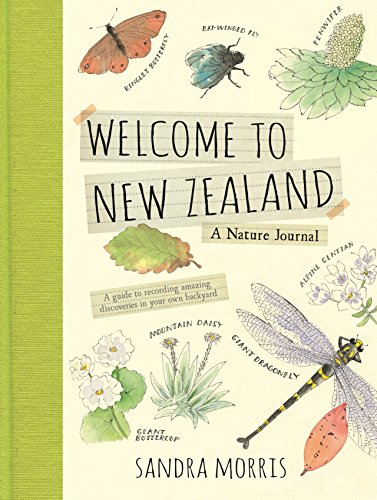
Author: Sandra Morris
Reading Age: 8-12 Years
Grade Level: 3-7
Description: “A gorgeous guide to creating a nature journal that will inspire kids around the world to chronicle what they see in their own backyards” (Amazon).
Where would I be in an evergreen tree?
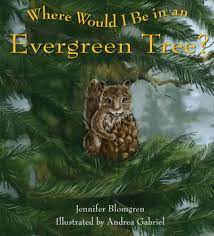
Author: Jennifer Blomgren
Reading Age: 3- 7 Years
Grade Level: Preschool- 2
Description: “This story-in-verse explores the beauty of the Pacific Northwest through the ecosystem of an evergreen tree. The tree's life cycle is illustrated by the variety of plants and animals it supports” (Amazon).
CWU News

Online Master’s of Education program now offers special education endorsement
May 15, 2024
by Rune Torgersen

Lenny Price brings Detroit perspective to CWU Jazz
May 15, 2024
by University Relations